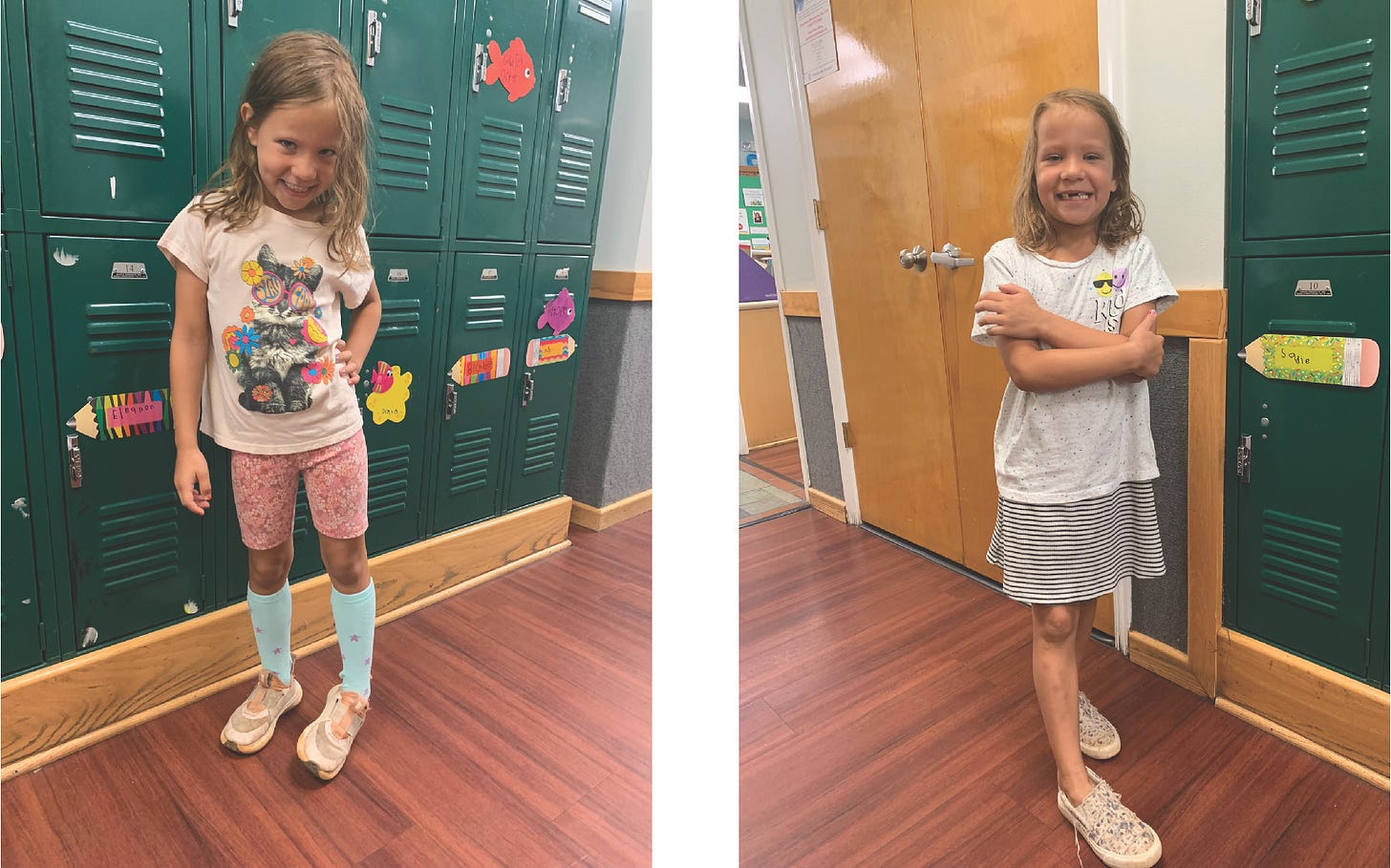Tantrums, Timeouts, Transitions, Yes and No
Teaching behavior and communication to our children.
After a long day of work back from vacation, I walk in the door and my daughter Ellie greats me with “can I have a snayck?” Putting her twang on the word snack. Snack time is 3pm, it’s almost 4 and she knows it. So, I say yes, and she calls her sister over to the pantry. A few seconds later she walks out with her beautiful dimples on display holding a bag of Oreos asking if she can have them. I explained that was a treat and not a snack. I said 3pm snack time is for fruit snacks. She walks back in and starts riffling through the pantry again. She starts to whine as she’s looking through. Next, she and her sister are asking for mini blueberry muffins, I said “no, fruit snacks or nothing.” She was not happy. She stomped her feet and declared “No! Not fair!” And before she could get the next word out, I told her it was timeout time and no snack today. The way she screamed at me you would have thought I cut off a finger, but she acquiesced and stomped to her room.
Ellie is five going on six and will be entering kindergarten this year. This is a transition period for her so it’s also a transition period for my parenting. During the toddler stage the girls mostly pointed or used one word to ask for things. When they didn’t know the word, they would get frustrated because I didn’t understand them. During the pre-k stage I helped them develop sentences by teaching them that if they want something they must ask and be specific. When they succeeded in asking properly at the appropriate time, they would hear yes, a lot. During this phase their behavior got better because we understood each other better. This is the time I taught my girls the what and how of communication. What do they want and how do they ask for it. This tool of communication is important in teaching proper behavior, and it’s best taught at a young age. But every tool in the hands of a child becomes a weapon to serve their desires and now that they are in a new stage, they’ve started asking for more than they should have.

While the pre-k phase was filled with Yes’s, the kindergarten phase will be filled with No’s. This phase is teaching them the why. Why do you want that? Do you need it? Why should I say yes? This can be challenging as a parent because no human alive likes to be told no, especially an adorable set of twins, armed with the tool of communication, who can charm anyone. At the beginning of every transition period, I use the parental tool of timeouts. During the pre-k phase timeouts were 5-10 minutes and worked effectively enough that we almost stopped using them before the kindergarten phase started. Now that they are older and understand how to communicate better, I bumped the timeouts up to 15-20 minutes. The goal is to allow enough time for them to throw a tantrum and then reflect on their behavior. And it needs to be long enough to make an impact. They need to know I’m serious. If they aren’t properly incentivized, the behavior won’t change.
During this phase of no, why and timeouts it’s important to finish the process with good communication. Where in the pre-k phase they were learning the active side of communication, now they are learning the passive side. Where I needed to understand them better for the behavior to change, now they needed to understand me.
After the timeout was over, I went upstairs, and we had a talk. When I opened the door and saw her dimple flash, I knew the tantrum was over and reflection had set in. It’s important to make sure the child is calm before having the conversation. Rational thought cannot survive in an irrational mind. I started asking questions: “Do you know why I sent you to timeout?” “What could you have done differently?” “Do you know why I said no?” Ellie uses her cuteness tool as a weapon, so she responded softly with a pouty face, but I want her to be as direct in communicating her needs as well her wants. I give her patience and she grew up before my eyes and before you know it, I’ve forgiven her, and she tells me next time she’s going to listen.

The behavioral highs and lows of childhood development— bad then good, then bad again, are normal because behavior follows communication. It’s the Ying and Yang of life. Each solution to a problem creates a new problem. With every action there is a reaction. Behavior shapes behavior. Human beings are adaptable and wired to serve our basic impulses. What makes us civilized is how we control and communicate those impulses. Each time they learn a new skill they will find a way to capitalize on it and as parents we need to adapt with them. It’s important we understand and communicate it to them. Sometimes they need a yes and sometimes they need a no, by teaching them what to ask, how to ask and why to ask, we are teaching the basics of how to communicate and behave. The older they get the more complex it will become but just remember our kids aren’t bad they are just kids, it’s our responsibility to shape them into adults.
Parenting and Politics have a lot in common. When the parent and child fail to communicate properly it leads to bad behavior much like when the Government and people fail to communicate. The most basic thing we can do to help our country is to teach our children to communicate and behave.


